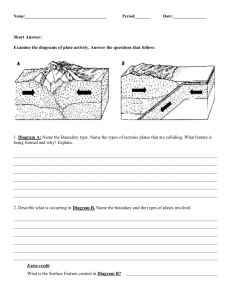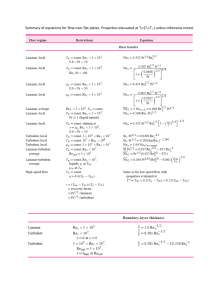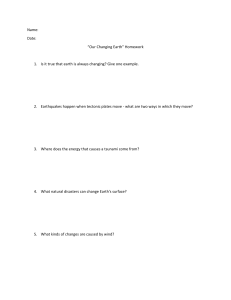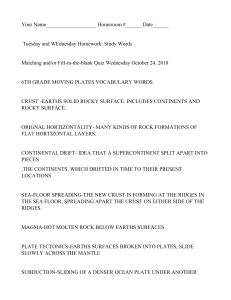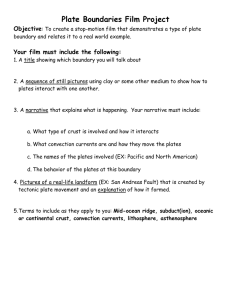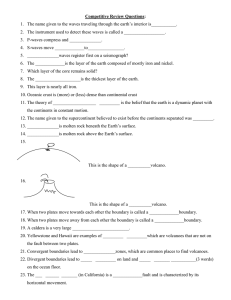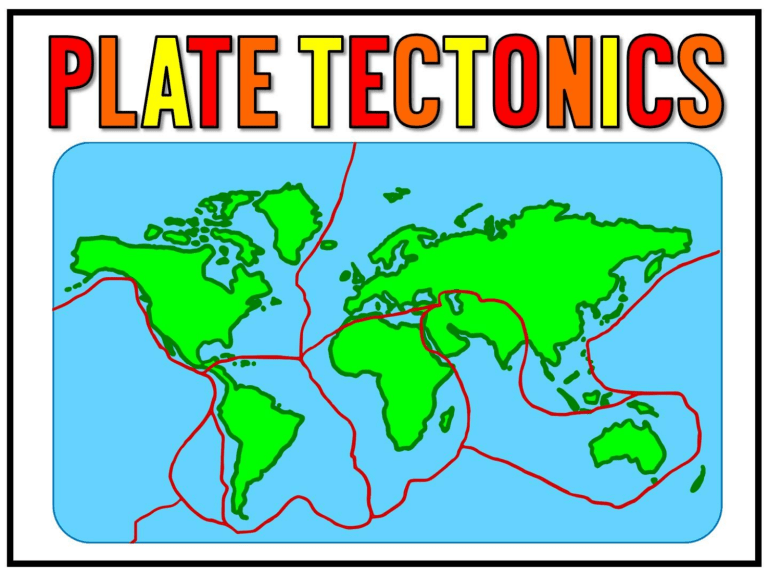
ANTICIPATION GUIDE 1) All the continents once formed one supercontinent. 2) Continents drift across the molten mantle. 3) Divergent boundaries are where two plates come together. 4) Volcanoes and earthquakes occur along plate boundaries. 5) Mountains can form at transform boundaries. Watch the video. Do you think one large continent really existed? Can you figure out how the continents once fit together? ALFRED WEGENER Wegener was Alfred ________ the scientist who proposed the theory Continental _____ Drift in of __________ the early 20th century. He proposed that continents had once __________ joined been ________ together. He noticed similarities between continental coastlines. EVIDENCE Climate Clues Fossil Clues Evidence of continental drift included _______ fossils that were found on separate continents, landform shapes and features, rock identical ______ formations on separate continents, and ________ climate evidence. For example, evidence of warmer climates was found in Antarctic fossils. LITHOSPHERE lithosphere is the The _________ rigid outer layer of ____ the Earth. It is made up of the crust and upper _____ mantle. It is broken tectonic plates into ________ that move slowly upper over the _____ mantle. PANGAEA The continents are moving They always ______. move about two centimeters and half _________ each year. A ___________ supercontinent called Pangaea existed _______ about 250 million years ago. Pangaea PLATES lithosphere is broken into _____ eight The _________ major plates and many minor ones. CONVECTION CURRENTS Tectonic ______ plates on the planet’s move surface _____ because of convection _________ currents in the mantle Hot _______. rises material ____ and cool sinks material ____. PLATE BOUNDARIES Geologic activities occur boundaries along plate ____________. Plate tectonics is responsible for the creation of most continental and ocean floor features and for the distribution of rocks and minerals within the Earth’s crust. Plate tectonics also shapes our existing continents and affects seismic and volcanic activity. three major types There are _______ of plate boundaries. CONVERGENT BOUNDARY A convergent __________ boundary is where two plates are moving ________ towards each other. Plates can push up to form mountains or one can ___ slip below the _________ other in what is called a __________ subduction zone. CONVERGENT BOUNDARY One example, is where more dense oceanic plates slide under less dense continental plates. An oceanic plate forming a trench at a subduction zone where crust is melting and recycled is another example. Along these trenches, island arcs and volcanic arcs can be created. When two continental plates collide, mountains are formed. Earthquakes also occur as these plates collide. DIVERGENT BOUNDARY A _________ divergent boundary is where two plates are moving ______ away from each crust is formed when other. New ______ _______ magma rises to the surface between two plates. DIVERGENT BOUNDARY Divergent boundaries create mid-ocean ridges and rift valleys. New crust forms because magma pushes up and hardens in the rift zone between separating plates. (seafloor spreading) Volcanoes and other types of volcanic activity occur along these boundaries. Earthquakes also occur as plates spread apart. TRANSFORM BOUNDARY Transform boundaries are where two _________ plates ______ slide sideways past each other. friction and pressure builds, it can As the ______ be released in the form of ____________. earthquakes TRANSFORM BOUNDARY At a transform boundary, crust is neither created nor destroyed. Earthquakes occur frequently as plates slide past each other. The San Andreas Fault in California is an example of a transform boundary. San Andreas Fault LET’S REVISIT 1) All the continents once formed one supercontinent. 2) Continents drift across the molten mantle. 3) Divergent boundaries are where two plates come together. 4) Volcanoes and earthquakes occur along plate boundaries. 5) Mountains can form at transform boundaries.
